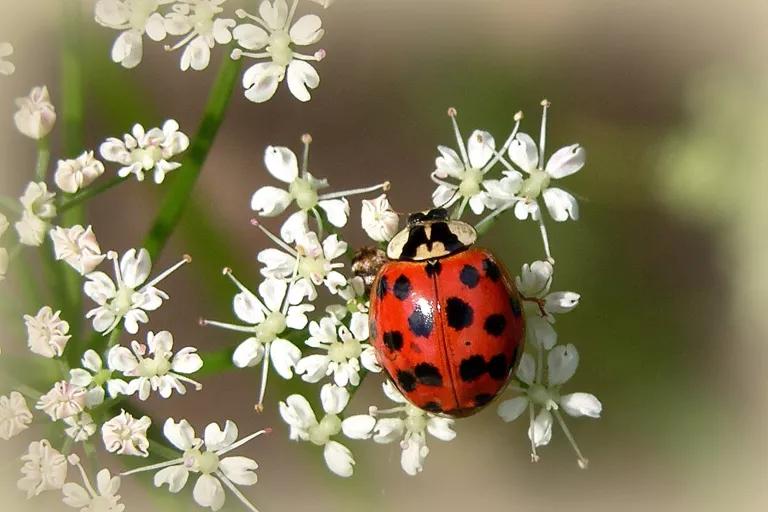Something's Hot in the State of Denmark
An 18-year survey hints at how global warming may be changing the face of Danish bugs.

Most hobbyists pursue their passion for the sheer pleasure of it. That’s true for entomologist Ole Karsholt, who loves collecting insects, though it just so happens that his particular pursuit has also shed light on how climate change may be affecting Copenhagen’s ecosystems. Take that, anyone who ever made fun of the kid with the butterfly net.
Back in 1992, Karsholt, a collections manager at the Natural History Museum of Denmark, near Copenhagen, got to wondering whether there were any moths flying above the building. He did what any obsessive curious scientist might do: He headed to the roof and set up a light trap—basically a light bulb over a funnel over a bucket—to see what, if any, insects he could lure 60 feet above the ground. Within the first week, he hit the jackpot.
“The trap caught a small moth, a leaf blotch miner, which had not been found in Denmark for about 50 years,” says Karsholt. “We thought it had become extinct!”
He was hooked, his pursuit soon turning into a full-blown project. He recruited a colleague, Jan Pedersen, to help him identify the insects he caught, and together the pair painstakingly sorted through their leggy, crunchy haul once a week, studying their finds through microscopes. They trapped on the roof every spring, summer, and autumn…for 18 years, until museum renovations required that the trap be moved, in 2009.

In total, Karsholt and Pedersen collected more than 250,000 moths and beetles belonging to 1,543 species. That represents 42 percent of Denmark’s moth species and 12 percent of its beetles, if anyone’s counting. Among the insects captured were seven types of moth and two types of beetle never before recorded in Denmark, including the Asian ladybug, an invasive pest that has since spread throughout the country.
The effort took an enormous amount of time, both on and off the clock. “I think most entomologists are a bit crazy,” says Karsholt by way of explanation.
Intrigued by the long-term study, Philip Francis Thomsen, a postdoc at the museum, asked Karsholt if he and another colleague, Peter Søgaard Jørgensen, could compare the data with climatic trends. On Monday, the Journal of Animal Ecology published their findings, which might be enough to make anyone bug out.
The profile of the local insect community, the researchers found, had been changing over the course of the 18-year study as the average regional temperature rose by 0.3 degrees Celsius. They determined this by categorizing the collected bugs by diet—whether the insects subsist on a single food source (specialists) or a variety (generalists)—and by whether they live in predominantly colder or hotter climates. Then they looked at the breakdown of bugs Karsholt and Pedersen had recorded.
They discovered that the mix of cold- and hot-dwelling generalists remained the same or increased, even as temperatures climbed. At the same time, the number of hot-dwelling specialists increased over the years, while the number of cold-dwelling specialists fell.

Take the nut weevil, for example. This is a beetle that feeds only on hazelnuts and has a historic range that extends far into northern Europe. Karsholt and Pedersen recorded the weevil early on in the study, but it disappeared in later years. On the other hand, its relative, the acorn weevil, which eats—well, you can guess—lives in more southern (and warmer) areas of Europe, and it began popping up on the museum’s roof in more recent years.
At some point, says Jørgensen, it’s possible that conditions will become too warm for some cold-weather insects, and they’ll be squeezed out of Copenhagen altogether.
“The results strongly suggests that temperature is the main driving effect,” he says, noting that the landscape around the museum remained fairly unchanged throughout the study. “We’re always saying that a two-degree increase is safe, but this is another example of how we’re already seeing the effects of climate change. These small changes in temperature do have effects.”
As we’re seeing more and more and more, messing with even the smallest of creatures can have big consequences. And as Karsholt has long known, the Lilliputian are worth looking at.
This article was originally published on onEarth, which is no longer in publication. onEarth was founded in 1979 as the Amicus Journal, an independent magazine of thought and opinion on the environment. All opinions expressed are those of the authors and do not necessarily reflect the policies or positions of NRDC. This article is available for online republication by news media outlets or nonprofits under these conditions: The writer(s) must be credited with a byline; you must note prominently that the article was originally published by NRDC.org and link to the original; the article cannot be edited (beyond simple things such grammar); you can’t resell the article in any form or grant republishing rights to other outlets; you can’t republish our material wholesale or automatically—you need to select articles individually; you can’t republish the photos or graphics on our site without specific permission; you should drop us a note to let us know when you’ve used one of our articles.

Can Anything Be Done to Stop Overfishing?
Saving Big Mammals Fights Extinction and Climate Change
Biodiversity 101